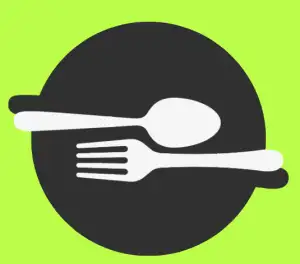The Health Benefits and Risks of Eating Corn Starch: Unveiling the Truth about Pica

Corn starch, a common ingredient used in cooking and baking, has gained attention due to its association with a condition called pica. Pica is characterized by the persistent craving and consumption of non-food substances, such as clay, dirt, or in this case, corn starch. While corn starch itself is not harmful when consumed in moderation, excessive intake can lead to health risks. In this article, we will explore the health benefits and risks of eating corn starch and shed light on the truth about pica.
Understanding pica: Definition and causes
Pica is a disorder characterized by persistent cravings for non-food substances, such as corn starch. It is most commonly observed in children, pregnant women, and individuals with certain medical conditions. The exact cause of pica is not fully understood, but it is believed to be linked to nutritional deficiencies, psychological factors, and cultural practices. Some theories suggest that pica may be a way for the body to compensate for nutrient deficiencies or to alleviate stress or anxiety. However, more research is needed to determine the precise causes of this disorder.
The potential risks of consuming corn starch
Consuming corn starch can pose potential risks to our health. One of the main concerns is its high carbohydrate content, which can lead to weight gain and increase the risk of developing conditions like obesity and diabetes. Additionally, corn starch is low in fiber, which may contribute to digestive issues such as constipation. Moreover, excessive intake of corn starch may also cause nutrient deficiencies as it lacks essential vitamins and minerals. It's important to be aware of these risks and consume corn starch in moderation as part of a balanced diet.
Nutritional value of corn starch
Corn starch, derived from the endosperm of corn kernels, is primarily composed of carbohydrates. It is a good source of energy and provides a high amount of calories. However, it lacks essential nutrients such as vitamins, minerals, and fiber. Corn starch is low in protein and fat content as well. While it can be used as a thickening agent in cooking and baking, it should not be relied upon as a significant source of nutrition. To maintain a balanced diet, it is important to incorporate a variety of nutrient-rich foods into your meals.
Health implications of excessive corn starch consumption
Excessive corn starch consumption can have negative health implications. Firstly, it can lead to weight gain and obesity due to its high carbohydrate content. This can increase the risk of developing chronic conditions such as diabetes and heart disease. Secondly, consuming large amounts of corn starch can cause digestive issues like bloating, gas, and constipation. Additionally, it may disrupt blood sugar levels and contribute to insulin resistance. It is important to consume corn starch in moderation to maintain a healthy diet and minimize these potential health risks.
Tips for managing pica and reducing corn starch intake
1. Gradually reduce consumption: Instead of quitting cold turkey, gradually decrease the amount of corn starch you consume to avoid withdrawal symptoms.
2. Find alternatives: Replace corn starch with healthier options like whole grains, fruits, and vegetables to fulfill your cravings.
3. Distract yourself: Engage in activities that divert your attention from the urge to eat corn starch, such as hobbies or exercise.
4. Seek support: Share your struggle with friends or family who can offer encouragement and hold you accountable during your journey to reduce corn starch intake.
5. Practice stress management techniques: Pica can be triggered by stress, so finding healthy ways to manage stress, such as meditation or yoga, can help reduce the desire for corn starch.
6. Keep a food diary: Track your daily food intake to identify patterns and triggers that lead to excessive corn starch consumption. This will help you develop strategies to overcome those triggers.
Remember, managing pica requires patience and determination. It's important to seek professional help if needed and adopt a balanced approach towards nutrition for overall well-being.
Seeking professional help for pica and its underlying causes
If you or someone you know is struggling with pica and excessive consumption of corn starch, it is important to seek professional help. A healthcare provider can help determine the underlying causes of pica and develop a treatment plan tailored to your specific needs. They may recommend therapy, such as cognitive-behavioral therapy, to address any psychological factors contributing to pica. Additionally, they can provide guidance on managing cravings and finding healthier alternatives to corn starch. Remember, seeking professional help is an essential step towards promoting overall well-being and breaking free from the harmful effects of pica.
In conclusion, while corn starch can be a part of a balanced diet, it is important to consume it in moderation. Excessive consumption of corn starch can lead to various health risks and complications. It is crucial to understand the underlying causes of pica and seek professional help if necessary. By managing pica and reducing corn starch intake, individuals can promote a healthier approach to their diet. Remember, balance is key in maintaining overall well-being and enjoying the benefits of different foods.
Published: 21. 12. 2023
Category: Food



